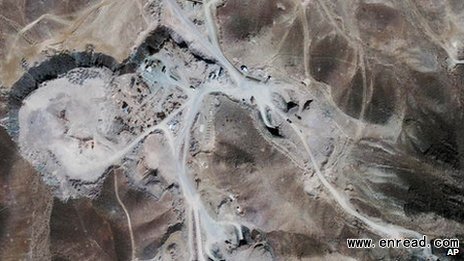美国职责伊朗铀浓缩活动
The US has said Iran's enrichment of uranium at an underground site is "a further escalation" of its ongoing violation of UN resolutions.
美国称,伊朗在某地下场所进行的铀浓缩活动“进一步”违反了联合国决议。

Satellite images showed the Fordo site under construction in 2009
Analysts say 20% enrichment is an important step towards making uranium weapons-grade, but Tehran says it is for purely peaceful purposes.
The UK and France condemned the move.
'Provocative act'
In Washington, state department spokeswoman Victoria Nuland said on Monday that enrichment works at Fordo, near the city of Qom, raised further doubts about Tehran's peaceful intentions.
"We call on Iran once again to suspend enrichment activities, co-operate fully with the IAEA (International Atomic Energy Agency) and immediately comply with all (UN) Security Council and IAEA board of governors resolutions," she said.
In Paris, a statement by the foreign ministry said the Iranian move "leaves us with no other choice but to reinforce international sanctions and to adopt, with our European partners and all willing countries, measures of an intensity and severity without precedent(先例) ".
British Foreign Secretary William Hague condemned the "provocative act which further undermines Iran's claims that its programme is entirely civilian in nature".
Earlier on Monday, a spokeswoman for International Atomic Energy Agency (IAEA), Gill Tudor, said the agency could "confirm that Iran has started the production of uranium enriched up to 20%".
She added that "all nuclear material in the facility remains under the agency's containment and surveillance".
Iran insists enriched uranium is needed to make isotopes to treat cancers.
The existence of the facility near Qom, in the north of the country, only came to light after it was identified by Western intelligence agencies in September 2009.
Tehran said it began the project in 2007, but the IAEA believes design work started in 2006.
BBC Iran correspondent James Reynolds says the facility has attracted plenty of attention and suspicion.
It is underground, heavily fortified and protected by the armed forces - making it a very difficult target for air strikes.
The US and Israel have refused to rule out(排除) attacks on Iranian facilities.